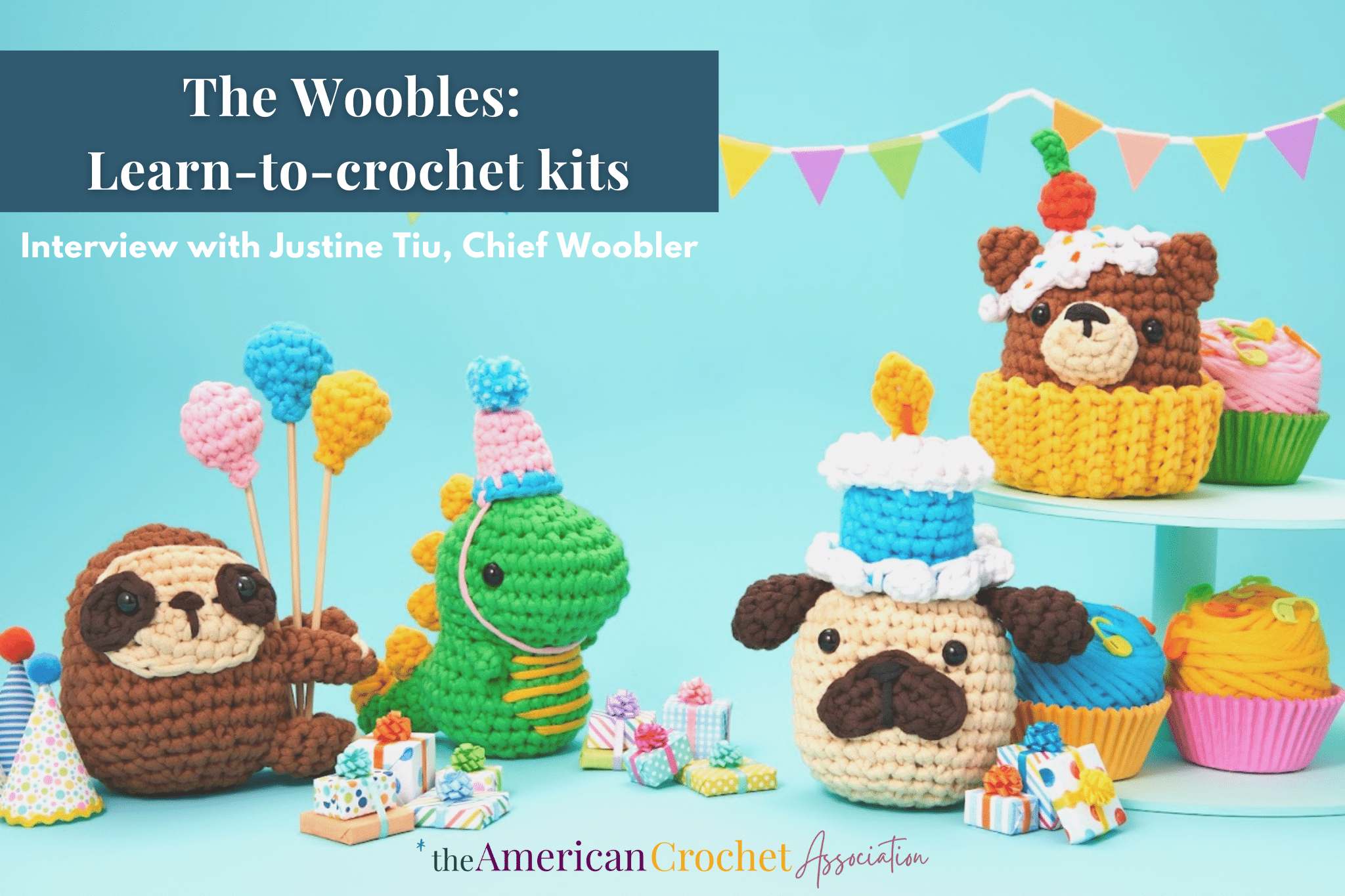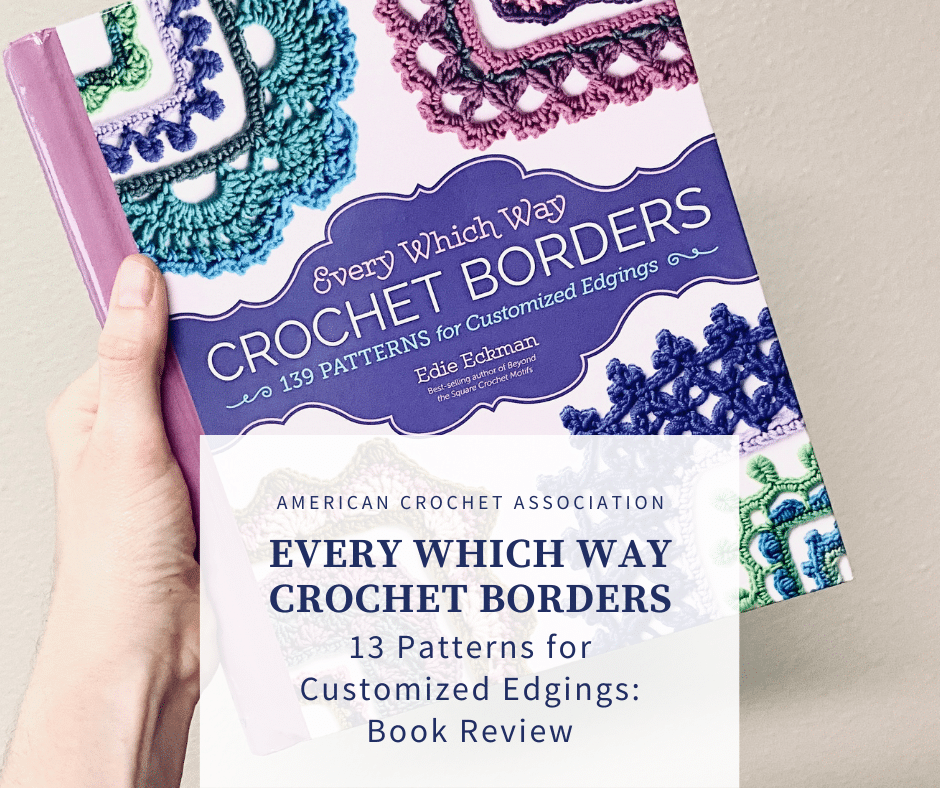If you are a crochet designer, or a crocheter interested in breaking into design, then you might want to bow down to Dora Ohrenstein right now because her new crochet stitch dictionary book has just made your life a whole lot easier.
One of the most challenging parts of designing a crochet project is figuring out how to get the shaping right.
Sure, it’s easy enough when you’re working in the basic stitches.
However, once you start working in more complex stitches, the count can get confusing, and it can quickly become frustrating to try to figure out how to properly shape the item without messing up the design.
Dora’s innovative new stitch dictionary solves that problem for you.
Even if you don’t plan on getting into crochet design, her information makes it so much easier to turn any stitch you like into a garment or accessory.
Table of contents
Estimated reading time: 8 minutes
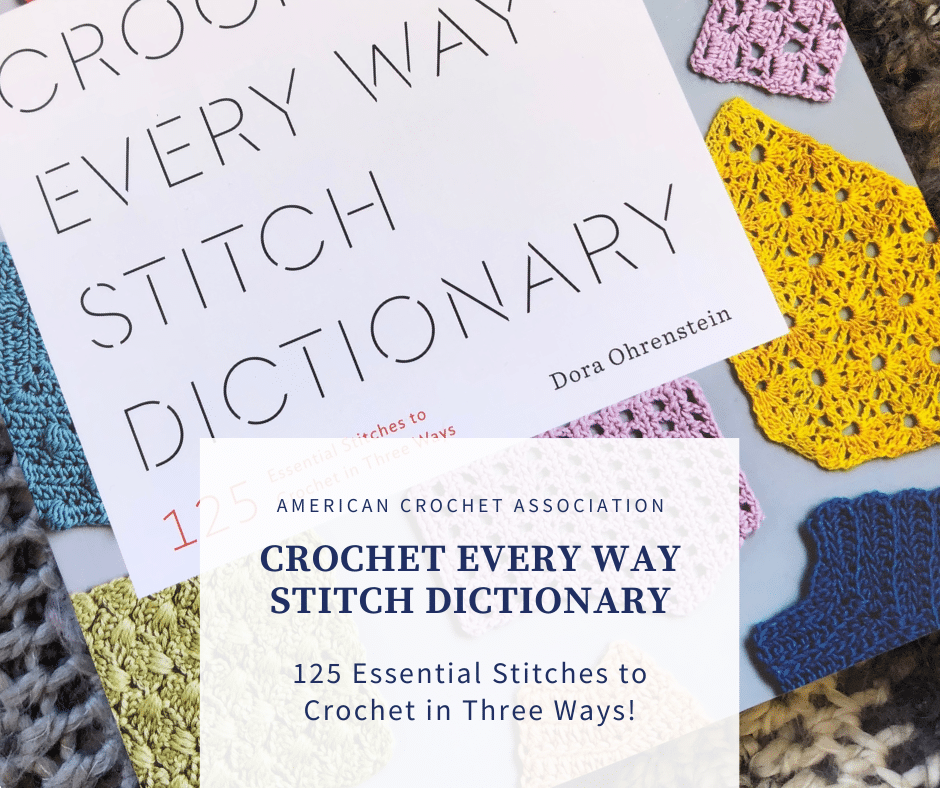
What makes this book stand out
Here’s what Crochet Every Way does differently from other crochet stitch dictionaries: it shows you multiple methods of shaping each stitch pattern.
Most stitch dictionaries don’t bother to address increasing and decreasing.
So, you can learn how to crochet a particular shell or ripple or bobble worked evenly across rows, but you have to do the math yourself to figure out how to change that from a square / rectangular design into any other shape.
If you want to make clothing or even a triangular shawl, you’ll have to figure out how to do so on your own.
Even stitch dictionaries that make mention of shaping typically don’t go into much detail.
Dora provides that detail.
She shows how to work each stitch evenly in rows but then also shows how to increase and decrease.
Moreover, she explains that with some stitch patterns you can easily increase/decrease at the edges whereas others work best with “internal shaping” where the additions and subtractions take place within the row.
For many people, this seemingly simple information is going to be a crochet-changing revelation.

About Dora Ohrenstein
Dora is a crochet teacher who has also authored several previous books.
The theme that seems to run through all of them is that she uses her own knowledge and passion for detail to provide clear, thorough information that helps other crocheters elevate their work.
Her book Custom Crocheted Sweaters: Make Garments that Really Fit is one of the best guides out there to learning how to adapt crochet patterns so that they actually flatter your shape and style.
Likewise, The New Tunisian Crochet: Contemporary Designs from Time-Honored Traditions goes far beyond just teaching you the basics of Tunisian crochet and instead provides information about more than thirty stitches in this niche.
In other words, Dora goes above and beyond to not just give you patterns but also to make sure that you fully understand the nuances of the technique so that you can take the information further than just what’s in one book.
Therefore, it’s no surprise that Crochet Every Way is also packed with tons of helpful information.
A book that will educate you
If you want an education on what shaping is in crochet and how to achieve it, this book truly has everything you might want.
Dora actually first learned to crochet in the 1970s, teaching herself how to make colorful garments while she lived a hippie lifestyle on a houseboat.
However, she didn’t stick with crocheting for long.
Then, in 2003, she decided to revisit the craft.
One thing led to another and she ended up throwing herself wholeheartedly into design.
She started studying garment construction by looking at fashion magazines and knitting books (although she doesn’t knit) but mostly she learned about shaping through trial and error.
She has swatched hour upon hour in an effort to understand how different fibers work with different stitches.
Despite her years of hands-on experience, she still found that working on this book allowed her to learn new things, which is something she loves.
She once shared with me:
“Your skills grow with every piece you make, and this is a lovely groove to get into. That’s why I’m so passionate about designing. Creating and learning at the same time is my idea of heaven!”
Of course, she passes what she learns on to the reader in this stitch dictionary.
For one thing, you’ll gain a strong understanding of what “edge shaping” and “internal shaping” are.
Put simply, edge shaping means that you add or delete stitches at the beginning or end of a row.
If you have ever made a simple single crochet triangle then you’ve likely seen edge shaping at work. In contrast, internal shaping means that you make the shaping changes within the row, leaving the edges alone.
However, you’ll learn a lot more than that from the details in this book.
You’ll learn that there are different rates of shaping – meaning that you can add more or less stitches at each increase, for example – and that you can make choices that create sharper angles along the edge.
When you get to the actual stitch patterns, you’ll see that Dora has used her own experience to clearly indicate the best options for shaping including the right row to begin shaping on for any given pattern.
But before you even get to the stitch patterns, you’ll learn how to convert any of the stitches in the collection into a scarf or a wrap, which is invaluable information if you’re not a designer and just want to know how to put this stitch dictionary to work for you.
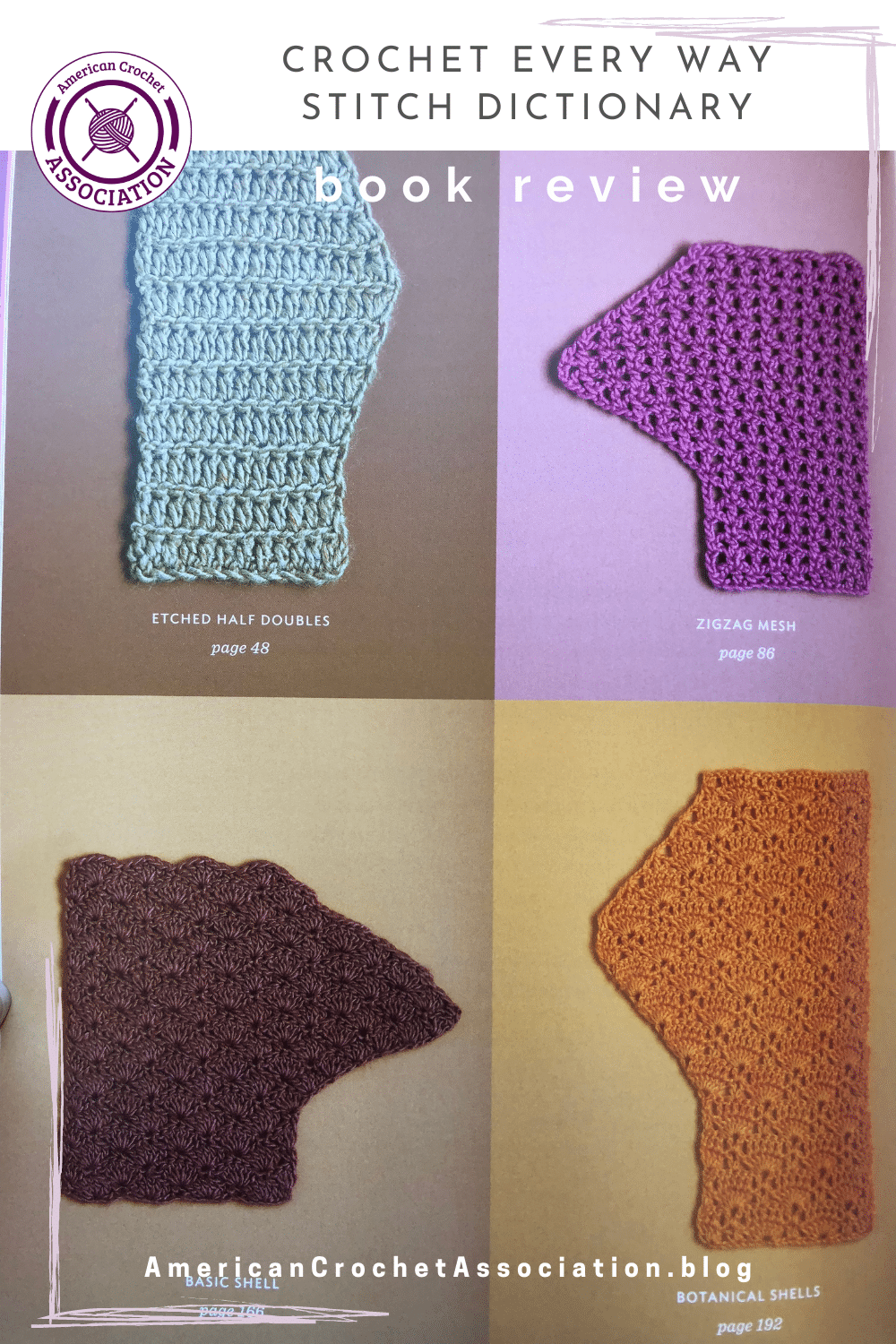
Six categories of stitch patterns
The stitch patterns themselves are divided into six distinct categories:
- Closed stitches, such as seed stitch, which are designed to create a dense, solid fabric. This is a natural place to begin because some of the simplest stitch patterns fall into this category. Therefore, you can easily begin to grasp the shaping ideas as you work with this first chapter.
- Mesh, filet, and easy laces, which are the easiest of the openwork stitches in this collection. Dora says, “these stitches are excellent stepping stones for building your skills, especially if you want to move into more elaborate lacework.”
- Textured stitches, such as popcorn stitch, where the stitches emerge or “pop out” from the fabric.
- Shell stitches, which Dora says, “are perhaps the most versatile stitches in the crochet vocabulary.” She notes that they are particularly great for learning internal shaping.
- Classic laces,which are the more advanced openwork designs that Chapter 2 laid the foundation for learning.
- Undulating stitches, which are the ripples, waves, and chevrons that repeatedly come back around again as trendy in crochet design.
Each individual stitch pattern is highly detailed.
You will see at least two photos of the stitch showing how it looks worked even as well as how it looks once you’ve done some shaping.
You’ll also find a written description of the stitch, which can often provide you with a great sense of the best way to use it in your own work.
Then you’ll find the following additional information:
- The number of stitches, as well as the number of rows, in the pattern repeat
- The multiple, which helps you figure out how long your starting chain should be
- Whether or not the fabric is reversible; where the two sides are very different, you’ll see an extra photo
- Row-by-row written instructions for working evenly, increasing and decreasing at the edge, and the increasing instructions for internal shaping
- Symbol charts showing the same information as the written instructions
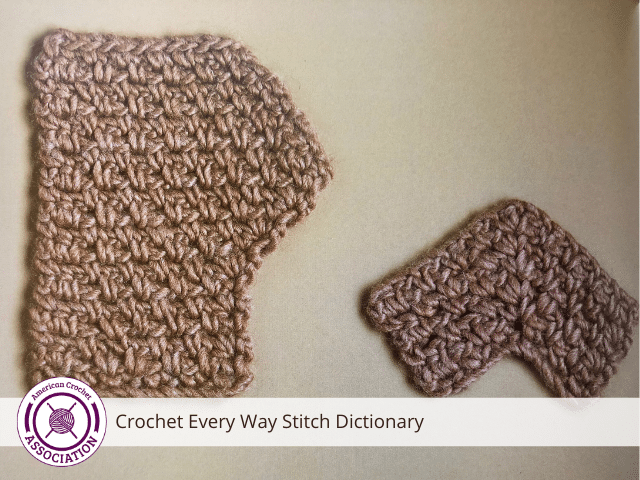
The written instructions can get very detailed.
If you need extra information for clarity, Dora has provided it, which becomes especially helpful in more complex patterns.
You can even see it at play in the simple patterns, though.
For example, let’s look at the “seed stitch” which includes:
- 3 rows of instructions for the basic “work even” pattern along with the direction to repeat rows 2 and 3 for the pattern
- Information that the rate of edge shaping is one stitch per row and that you can begin shaping on any odd-numbered row
- 2 rows of instructions each for increasing and decreasing in edge shaping
- Information that the rate of internal shaping is to add two stitches per row, along with a note reminding you that there should be a ch-1 space before and after each increase
- 2 rows of instructions for increasing in internal shaping
As you can see, even the very simple seed stitch, one of the first stitches in this dictionary, comes with an immense amount of information.
If you are a little bit geeky and like to know as much as possible about how crochet stitches work, then this book is for you.
If you’re ever stuck on how to get the correct shaping in someone else’s pattern, you can probably reference Dora’s book to get unstuck.
In other words, if you stick this dictionary on the shelf in your own craft library, then you’ll probably find that you turn to it again and again.
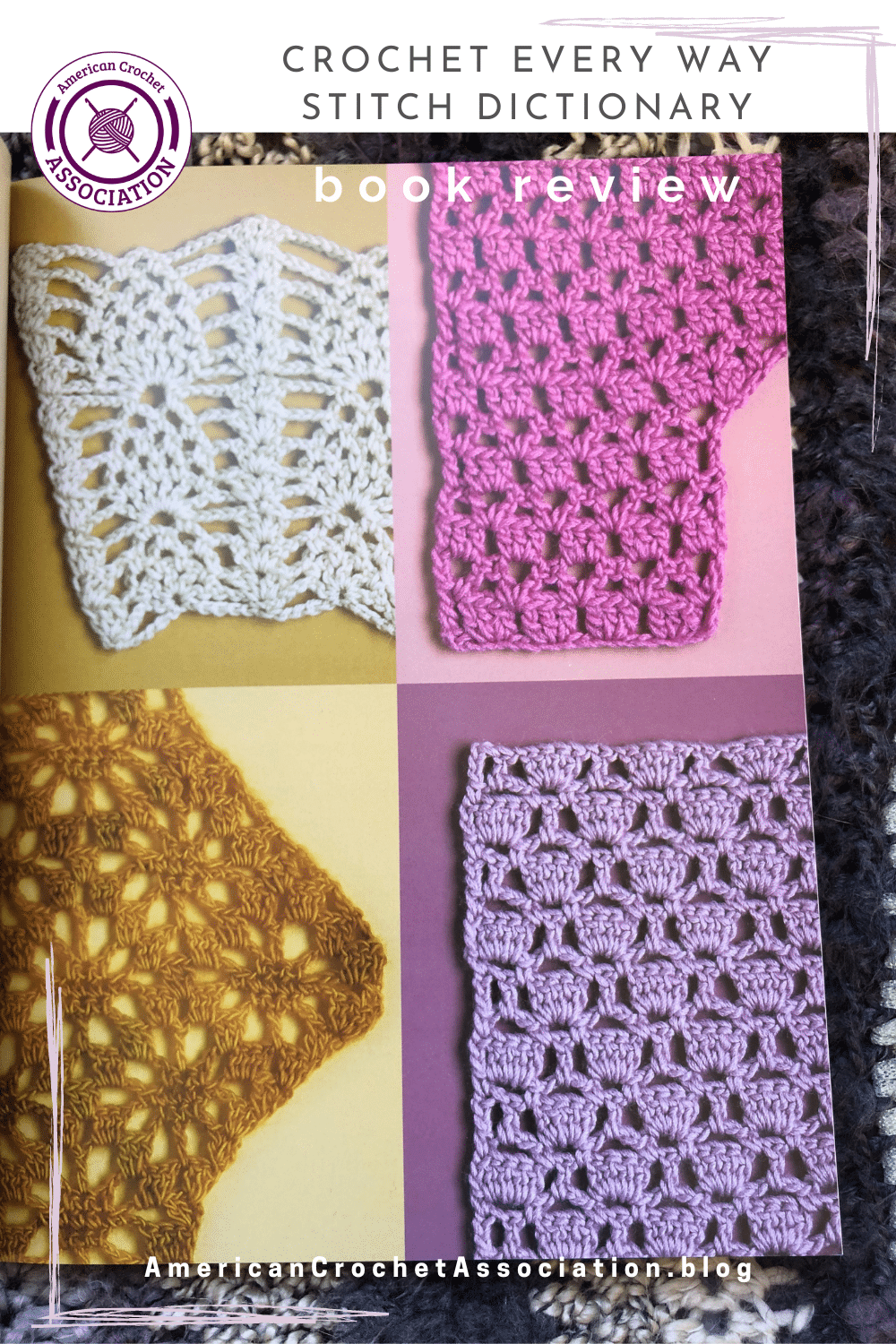
CLICK HERE to read our interview with Dora!
You can find Dora on Facebook and Ravelry.
Click Here to start a conversation in our community!
*Affiliate links are used in this article. If you make a purchase, we may earn a small percentage at no extra cost to you.




